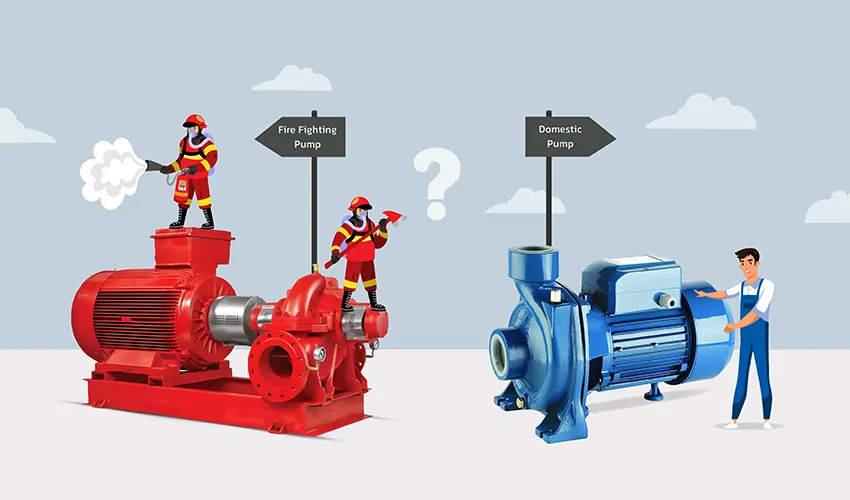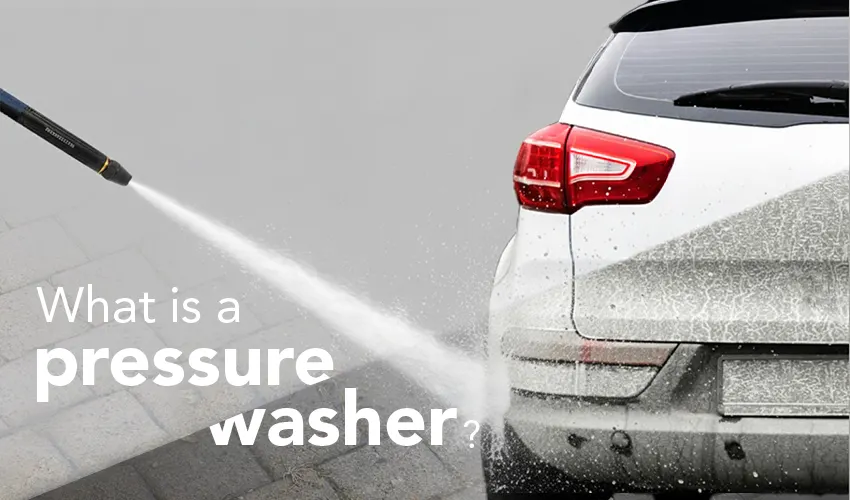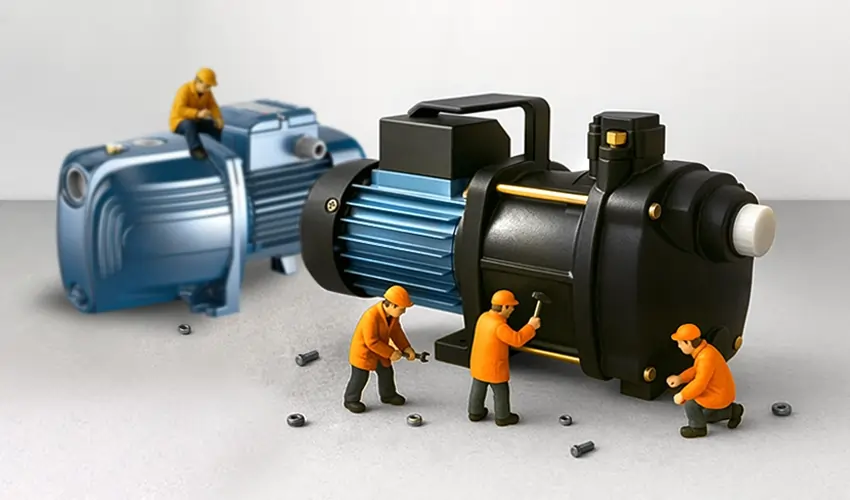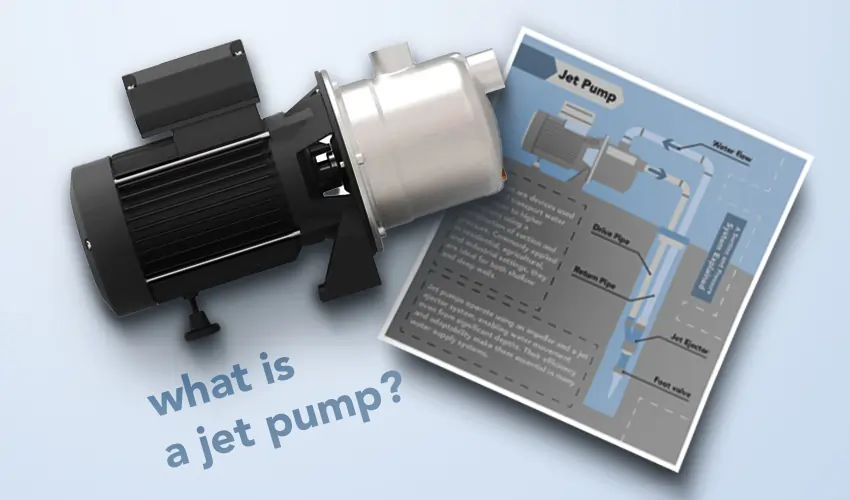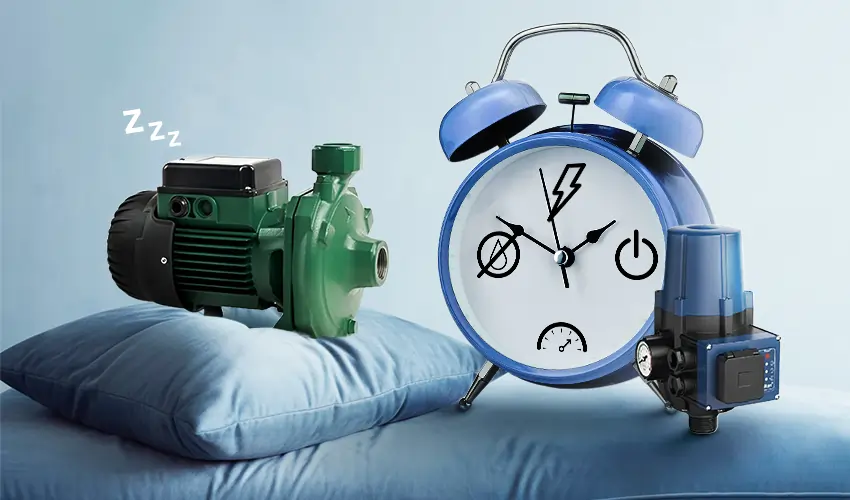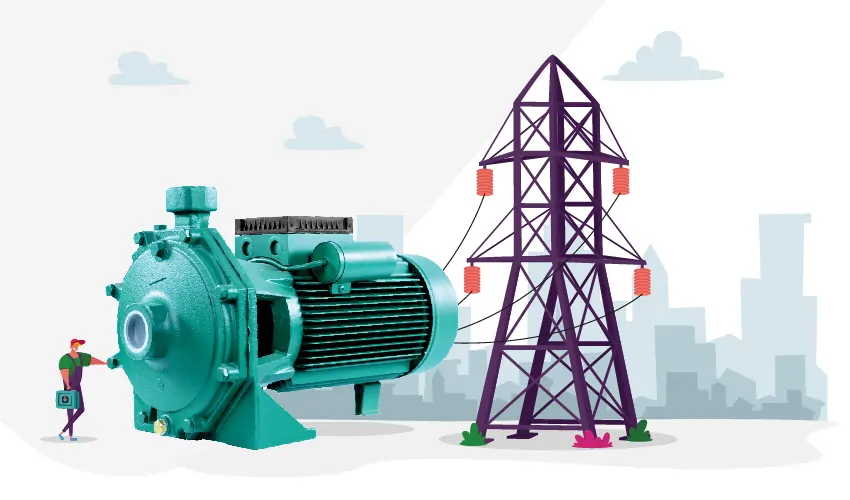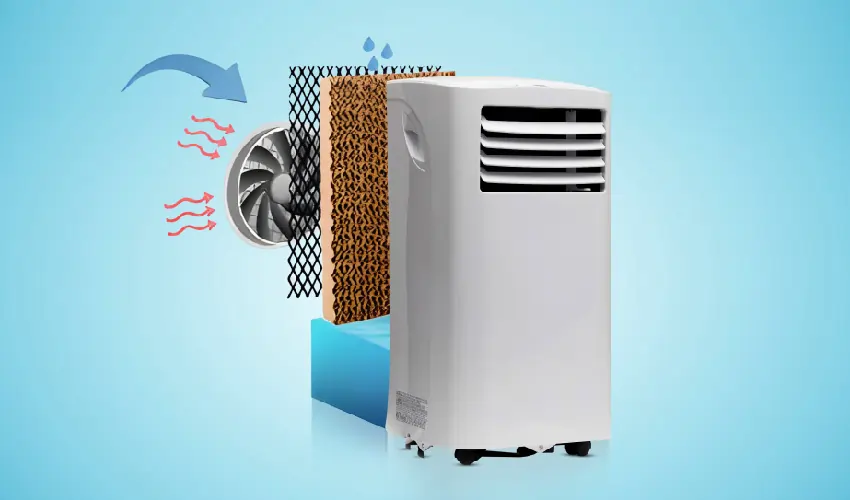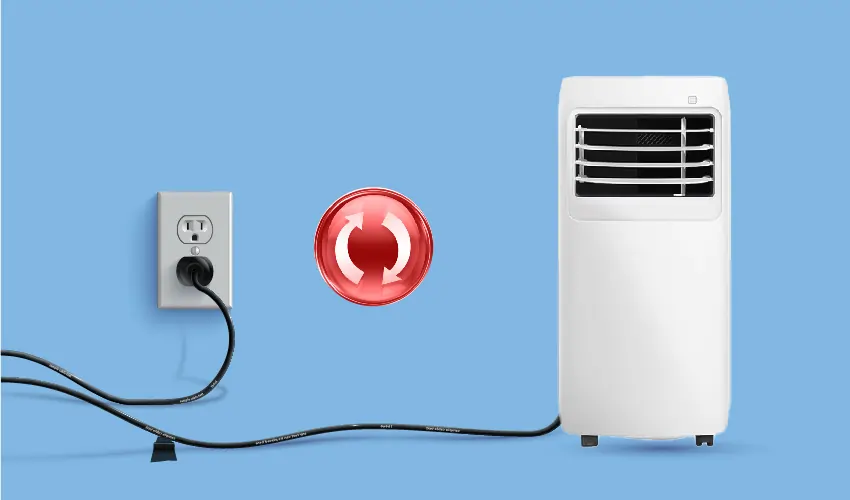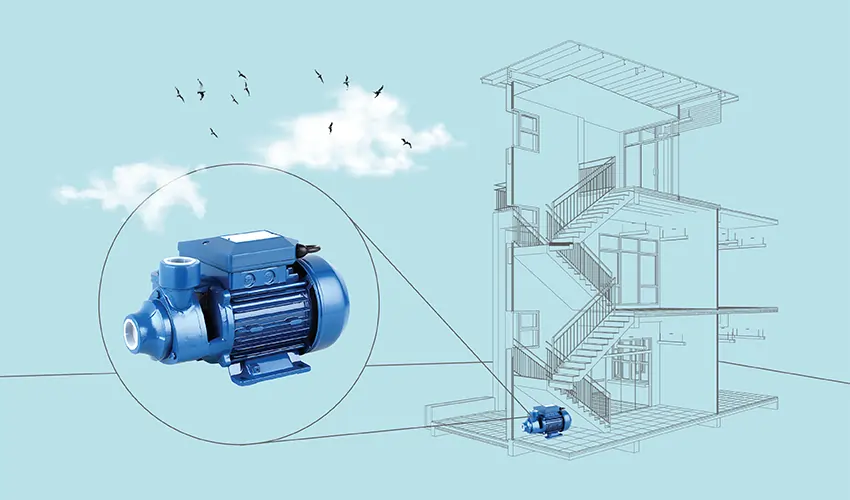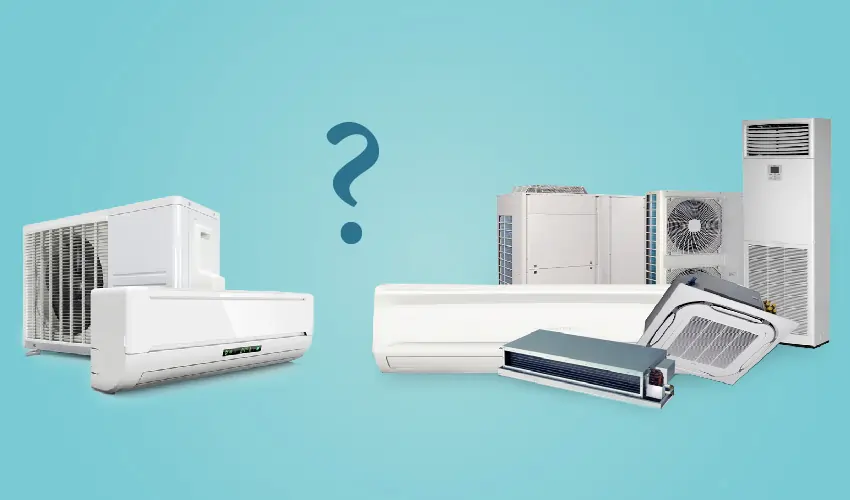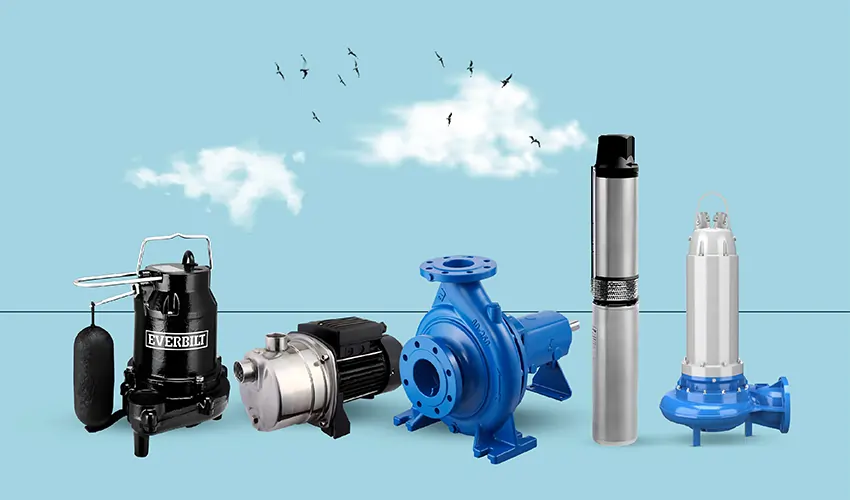Difference between Fire Pump and Water Pump
A fire pump is specifically engineered for firefighting operations, delivering high-pressure water flow necessary to extinguish fires effectively. In contrast, a water pump is designed for a broader range of applications, such as irrigation, water transfer, or drainage, and typically operates at lower pressures compared to fire pumps. Each type of pump is optimized for its specific purpose, reflecting its construction, performance characteristics, and areas of application.
What Is Fire Pump?
A fire pump is a type of pump specifically designed for firefighting purposes. Its primary function is to increase the water pressure in a fire protection system, ensuring that the water flow is sufficient to effectively combat fires. This is particularly crucial in large buildings or in areas where the municipal water system cannot provide adequate pressure. Fire pumps are an essential component of fire sprinkler systems and are often found in commercial and industrial buildings, as well as in large residential complexes. They are designed to be highly reliable and capable of operating under extreme conditions, as their performance can be critical during emergency situations.
What Are Fire Pump Types?
Fire pumps come in various types, each designed to suit specific requirements and installation conditions. Each type of fire pump has its own set of advantages and is chosen based on factors like available space, water source location, required flow rate, and pressure needs. The selection of a fire pump is critical for the effectiveness of a fire protection system.
Horizontal Split Case Fire Pumps
These are the most common types, known for their reliability and ease of maintenance. They are ideal for applications where high flow rates are required.
Vertical Split Case Fire Pumps
Similar to horizontal split case pumps but with a vertical configuration, these are used when space is limited.
Vertical Inline Fire Pumps
Compact and efficient, vertical inline pumps are used in situations where space is extremely limited, like in small buildings.
Vertical Turbine Fire Pumps
These pumps are used when the water supply is below the ground or at a considerable distance. They are installed vertically and are effective in drawing water from wells or underground water sources.
End Suction Fire Pumps
End suction pumps are simple in design and are used in smaller or less demanding applications. They are cost-effective and easy to install.
Jockey Pumps
While not primary fire pumps, jockey pumps are small pumps used to maintain pressure in fire protection systems to prevent the main fire pump from cycling on and off unnecessarily.
What Is Water Pump?
A water pump is a mechanical device designed to move water from one place to another and serve multiple purposes. It plays a crucial role in irrigation, helping to supply water to agricultural fields. In the context of drainage, it’s instrumental in removing water from areas like low-lying regions, basements, or construction sites. For municipal water supply, it’s essential to distribute water across both urban and rural settings. In industrial applications, water pumps are vital for processes such as supplying water for various operations, aiding in cooling systems, and managing wastewater.
Additionally, in domestic settings, these pumps are used in household water systems for a range of tasks, including supplying water to homes and draining swimming pools. Water pumps are available in different types, including centrifugal pumps, submersible pumps, and diaphragm pumps, each tailored for specific applications. The power source for these pumps can vary; they can be operated by electricity, engines, or even manually, depending on what’s needed in terms of capacity and the available resources. The choice of a water pump is influenced by several factors, such as the amount of water that needs to be moved, the height it must be lifted to, and the distance it is required to cover.
What Are Water Pump Types?
Water pumps come in a variety of types, each designed for specific applications and operating conditions. Each type of water pump has specific characteristics that make it suitable for certain applications, such as the volume of water to be moved, the distance to be covered, and the nature of the fluid being pumped. The selection of a water pump is a crucial decision based on these factors.
Centrifugal Pumps
These are the most common types, suitable for a wide range of uses. They move water by using a rotating impeller to create centrifugal force, which propels the water forward.
Submersible Pumps
Designed to be submerged in the water they are pumping, these pumps are often used in wells, ponds, and other underwater applications. They are particularly effective in deep water sources.
Diaphragm Pumps
These pumps use a flexible diaphragm that moves back and forth to create vacuum and pressure. They are often used for chemicals or fluids with high solid content.
Positive Displacement Pumps
In these pumps, water is moved by trapping a fixed amount and forcing (displacing) it into the discharge pipe. They are suitable for applications requiring a consistent flow rate.
Jet Pumps
These use a jet of water to create a vacuum to draw in more water. They are commonly used in shallow and deep wells.
Booster Pumps
Used to increase the pressure of the water flow. They are commonly used in systems where the existing water pressure is insufficient.
Distinction between Fire Pump and Water Pumps
The fire and water pump comparison lies primarily in their purpose and design specifications. In summary, while both fire pumps and water pumps are essential in their respective roles, the difference between fire pump and water pump lie in their specific applications, design requirements, and the regulatory standards they must meet. Fire pumps are specialized for emergency fire suppression, whereas water pumps serve a broader range of everyday applications. Let’s delve into Fire pump vs. water pumps.
Purpose
- Fire Pumps: Specifically designed for firefighting, these pumps are used to increase water pressure and flow in fire protection systems. They are a critical part of a building’s fire suppression system, ensuring that firefighters have adequate water pressure to combat fires, especially in high-rise buildings or areas where the municipal water system cannot provide sufficient pressure.
- Water Pumps: These are more versatile and used for a variety of applications such as irrigation, drainage, municipal water supply, and domestic water systems. Their purposes range from pumping water out of flooded areas to distributing water in residential and commercial settings.
Design and Performance
- Fire Pumps: Built to deliver high-pressure water flow, they must adhere to strict standards for reliability and performance, as they are essential in emergency situations. Fire pumps are typically robust and capable of handling high-pressure demands.
- Water Pumps: Designed with a broader range of specifications, depending on their intended use. They can vary from small, low-pressure domestic pumps to large, high-capacity industrial pumps. The design is more focused on efficiency and suitability for specific tasks like lifting, transferring, or pressurizing water.
Regulatory Standards
- Fire Pumps: Must comply with stringent safety and performance regulations, often set by national and international fire safety standards. Regular testing and maintenance are mandatory to ensure they function correctly during an emergency.
- Water Pumps: While also subject to safety and performance standards, these regulations are generally less strict than those for fire pumps, except in cases of pumps used for critical industrial or municipal services.
Conclusions
In conclusion, understanding the difference between fire pump and water pump is crucial in selecting the right equipment for specific needs. Fire pumps are specialized devices designed exclusively for firefighting purposes, ensuring high-pressure water flow in emergency situations. They adhere to strict safety standards and are integral to effective fire suppression systems, especially in large buildings.
In contrast, water pumps serve a more diverse range of applications, from irrigation and drainage to municipal water supply and domestic use. Their design varies widely to cater to different requirements in terms of water volume, pressure, and application context. While both types of pumps are essential in their respective fields, their distinct characteristics, design considerations, and compliance requirements highlight their unique roles in managing and utilizing one of our most vital resources: water. This understanding not only facilitates informed decision-making but also underscores the importance of each system in maintaining safety and efficiency in various aspects of daily life and industry.

